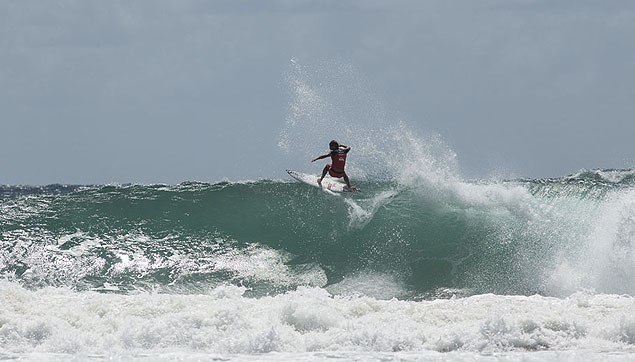
They can all do this. But which wave are they doing it on? Photo: @jamesboothphoto / @charliehardy
The first event of the newly polished ASP world tour is done and dusted. Gabriel Medina emerged from the dust as victor; Brazil cheered and the rest of the world begrudgingly acknowledged that the kid rips.
However, looking back on the competition, I have to say that given the surf was good, and the best surfers in the world were there, I was a bit underwhelmed. Not so much by the over-the-top desk or the monotone American drone that I will be forced to learn to accept this year; but by what we saw, or rather, didn’t see occur in the water.
It was all a bit boring.
This event featured some of the world’s most dynamic surfers. A small snapshot features Dane Reynolds, JJF, Julian Wilson, and of course Gabriel Medina – guys known for their gravity-defying surfing. There were a few glimpses of what they can do. For example, JJF’s crazy nosepick reverse. But what we saw far more of was repetitive and predictable surfing. Granted, it was done to a super high standard, but nothing that anyone will remember with a great fondness in years to come.
The ASP judging is rewarding safe surfing, which offers no reason for competitors to go big. Most of these guys can do picture perfect reos and cutbacks in their sleep. So at Snapper, the heats became about the best waves instead of the best surfing.
This approach to judging is putting far to much importance into wave size, and in the case of Snapper, the length of the ride. It could be part of the plan to make the competition more accessible to people who don’t surf. It’s a lot easier for spectators to understand scoring based on these parameters.
Perhaps the most frustrating thing I heard the commentators say throughout the event is how they were so happy to see such-and-such surfer hold back from doing something to risky and taking the option of a safe turn instead.
Should this be rewarded? Is it what we really want to see from the world’s best surfers?

